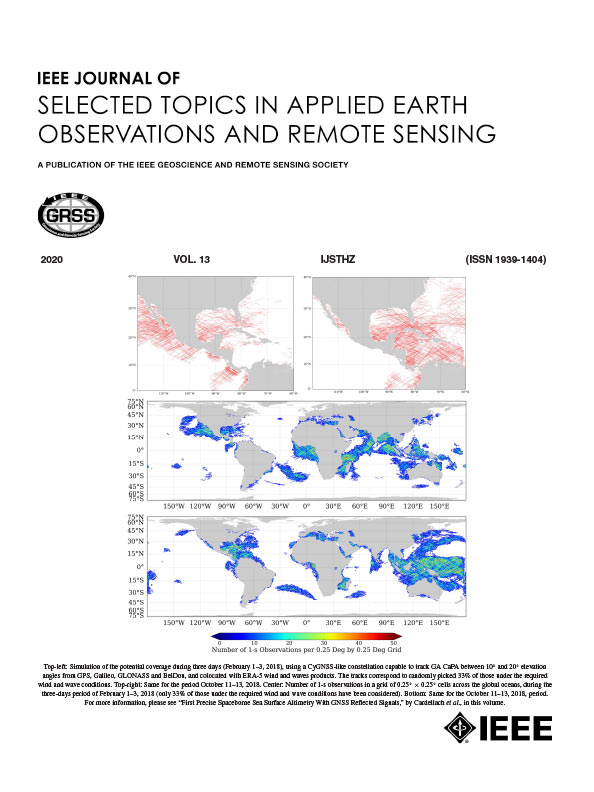利用NPP-VIIRS夜间灯光数据提高县级GDP估算精度
IF 5.3
2区 地球科学
Q1 ENGINEERING, ELECTRICAL & ELECTRONIC
IEEE Journal of Selected Topics in Applied Earth Observations and Remote Sensing
Pub Date : 2025-06-30
DOI:10.1109/JSTARS.2025.3584188
引用次数: 0
摘要
夜间灯光(NTL)数据为估算国内生产总值(GDP)提供了宝贵的支持。然而,通常使用的全球尺度NTL数据是由Suomi国家极轨伙伴关系(NPP)卫星上的可见光红外成像辐射计套件(VIIRS)获得的,它们的空间分辨率相对较低(15弧秒),限制了它们在精细尺度应用的潜力。在本文中,我们采用基于深度学习的NTL条件多尺度降尺度模型(NTL- cmdm),将多源尺度因子作为条件约束,将NPP-VIIRS NTL数据(500 m)降尺度到更精细的130 m空间尺度。此外,通过与NPP-VIIRS和罗家1-01 NTL数据在北京、上海和广州地区205个不同经济发展水平的县级市的比较,评价了缩小后的NTL数据在县级市GDP估算中的有效性。结果表明,使用缩小后的NTL数据(R > 0.782和R > 0.634), GDP与夜间总照明(TNL)和夜间照明面积(NLA)的回归比使用NPP-VIIRS NTL数据(R > 0.716和R > 0.110)的拟合精度更高,接近罗家1-01 NTL数据(R > 0.796和R > 0.267)的表现。此外,与NPP-VIIRS NTL数据相比,缩减后的NTL数据减少了估算GDP与统计GDP之间的相对误差,从而提高了GDP估算的准确性。更重要的是,从缩减后的NTL数据中得出的GDP估算值的空间分布更接近GDP统计数据,反映了更现实的地理格局。本文表明,NTL- cmdm生成的缩小规模的NTL数据为更精确、更精细的社会经济分析提供了一个有前景的数据源。本文章由计算机程序翻译,如有差异,请以英文原文为准。
Enhancing County-Level GDP Estimation Accuracy With Downscaled NPP-VIIRS Nighttime Light Data
Nighttime light (NTL) data have provided invaluable support for estimating gross domestic product (GDP). However, commonly used global-scale NTL data acquired by the visible infrared imaging radiometer suite (VIIRS) aboard the Suomi National Polar-orbiting Partnership (NPP) satellite suffer from relatively coarse spatial resolution (15 arcsec), limiting their potential for fine-scale applications. In this article, we employed a deep-learning-based NTL conditional multiscale downscaling model (NTL-CMDM), incorporating multisource scale factors as conditional constraints, to downscale NPP-VIIRS NTL data (500 m) to a finer spatial scale of 130 m. Furthermore, the effectiveness of downscaled NTL data for county-level GDP estimation was evaluated through comparison with NPP-VIIRS and Luojia1-01 NTL data in 205 Chinese county-level cities with varying economic development levels in the Beijing, Shanghai, and Guangzhou regions. The results show that regressions between GDP and both Total Nighttime Light (TNL) and Nighttime Light Area (NLA) using the downscaled NTL data (R > 0.782 and R > 0.634) achieve higher fitting accuracy than those using NPP-VIIRS NTL data (R > 0.716 and R > 0.110), and approach the performance of Luojia1-01 NTL data (R > 0.796 and R > 0.267). Additionally, the downscaled NTL data improve the accuracy of GDP estimates by reducing the relative error between estimated and statistical GDP compared to NPP-VIIRS NTL data. More importantly, the spatial distribution of GDP estimates derived from the downscaled NTL data more closely aligns with statistical GDP data, reflecting a more realistic geographic pattern. This article demonstrates that the downscaled NTL data generated by NTL-CMDM offer a promising data source for more accurate and fine-scale socioeconomic analysis.
求助全文
通过发布文献求助,成功后即可免费获取论文全文。
去求助
来源期刊
CiteScore
9.30
自引率
10.90%
发文量
563
审稿时长
4.7 months
期刊介绍:
The IEEE Journal of Selected Topics in Applied Earth Observations and Remote Sensing addresses the growing field of applications in Earth observations and remote sensing, and also provides a venue for the rapidly expanding special issues that are being sponsored by the IEEE Geosciences and Remote Sensing Society. The journal draws upon the experience of the highly successful “IEEE Transactions on Geoscience and Remote Sensing” and provide a complementary medium for the wide range of topics in applied earth observations. The ‘Applications’ areas encompasses the societal benefit areas of the Global Earth Observations Systems of Systems (GEOSS) program. Through deliberations over two years, ministers from 50 countries agreed to identify nine areas where Earth observation could positively impact the quality of life and health of their respective countries. Some of these are areas not traditionally addressed in the IEEE context. These include biodiversity, health and climate. Yet it is the skill sets of IEEE members, in areas such as observations, communications, computers, signal processing, standards and ocean engineering, that form the technical underpinnings of GEOSS. Thus, the Journal attracts a broad range of interests that serves both present members in new ways and expands the IEEE visibility into new areas.

 求助内容:
求助内容: 应助结果提醒方式:
应助结果提醒方式:


